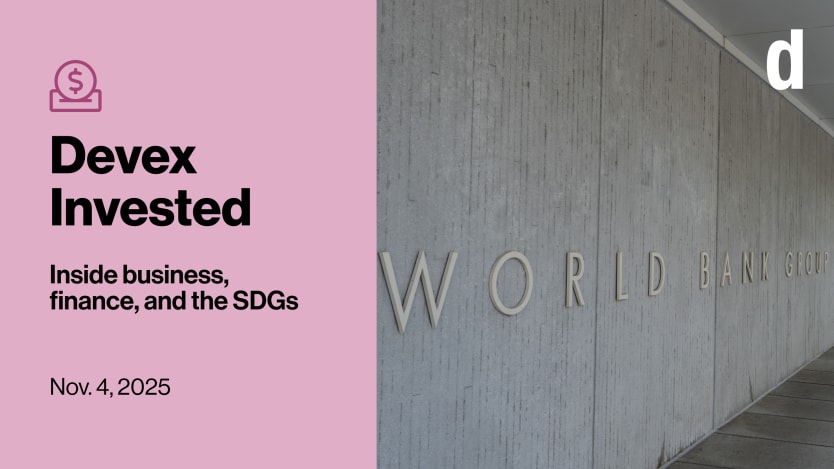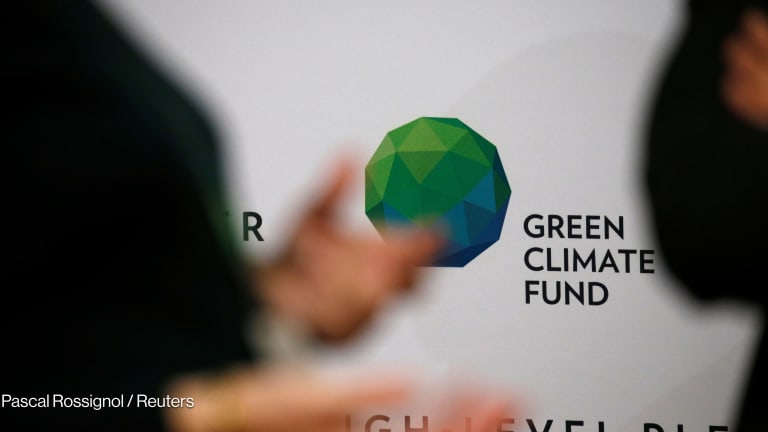
Short-term consultants make up about 25% of the World Bank Group’s workforce and are critical to carrying out its work. But that is about to change.
The World Bank will phase out all short-term consultants, or STCs, by January 2027, according to documents obtained by Devex. And there are about 22,000 of them, roughly equivalent to 7,000 full-time staff. The plan is to hire some of them as extended-term consultants, some as full-time staff, and some as independent contractors, with others leaving the bank.
Why? In a message to staff on its intranet last week, the bank said the institution has become too reliant on this “contingent workforce,” and it wants to bring more of the work in-house and “build a more strategic and sustainable approach” to temporary hiring, not to cut costs.
Attempts to reform this system aren’t new. But staff are concerned about the transition, how critical work will be carried out, and what it means for their jobs — and in some cases, their visa statuses.
“The proposed overhaul of the contract architecture represents a significant shift that, without a more careful analysis, could impair instead of improve the World Bank Group’s ability to service its clients,” the staff association wrote in a statement to the World Bank board’s Human Resources Committee.
The staff association does not oppose reform, but called for “comprehensive consultation” to ensure changes are “efficient and humane.” It also questioned management’s rationale, saying the justification “appears convoluted and insufficiently explained, giving the impression that minor issues are driving major policy shifts.”
There are many staff concerns including a lack of clear guidance, operational problems, and a need to change limits on new hires to be able to hire staff to carry out the work of STCs. They also said another issue is the potential costs of the changes — staff positions, extended-term consultants, and independent contractors will all cost more due to added benefits or tax issues. And that comes at a time when shareholders — especially the U.S. — are putting pressure on the bank to rein in costs.
This all adds up to a lot of changes at the bank. They come as it is going through a reorganization and merging large parts of its operations, with ongoing questions about staffing implications of those moves. These staffing shifts are sure to be disruptive, staff tell us.
Read: World Bank staff alarmed by plan to phase out short-term consultants
Background: World Bank president announces restructuring in staff email
+ It’s Career Week here at Devex, and we’re putting the emphasis firmly on key resources for those seeking their next development role. This means exclusive career stories, events, and a special report on hiring trends for key job roles post-aid cuts to help a community battered by layoffs discover new opportunities.
Sign up now for an annual Career Account membership and get a one-time 50% discount to access all our Career Week offerings.
Could EIB lend more?
The European Investment Bank, the world’s largest multilateral development bank, may be sitting on about €200 billion ($232 billion) in unused lending capacity, according to an analysis by Stephen Paduano, a postdoctoral researcher fellow at Oxford University and former U.S. Treasury official.
Paduano suggests that EIB could dramatically scale its operations without losing its AAA credit rating, but is constrained by its conservative attitudes and rigid guarantee policies, my colleague Jesse Chase-Lubitz reports. EIB could adjust the ratios governing its reserves, and it has a greater ability to withstand shocks — which could mean that it has about $67 billion in excess cash that it could deploy now, Paduano says.
“MDBs have the theoretical capacity to lend more, and there’s been a victory lap around that, but are they actually doing it? Are they making use of that excess headroom?” he tells Jesse.
That’s a good question, and one not only for EIB. As I reported earlier this year, while the World Bank did adjust its policies to free up lending, it hasn’t entirely made use of that extra lending ability.
A spokesperson for EIB did say that the bank has plans to lend more, but that it will do so gradually, and added that it is increasingly providing guarantees, which has reduced the amount it is lending.
Read: Europe’s biggest development bank is sitting on €200 billion
See also: In a changing world, where do World Bank reforms stand? (Pro)
+ Curious about the insights that drive global development? Experience Devex Pro with a 15-day free trial. Explore expert analyses, unlock hidden funding opportunities, connect with key players at exclusive events, and access a wealth of knowledge you won’t find anywhere else. Check out some of the content exclusive to Pro readers.
Climate finance highs
The Green Climate Fund approved a record level of funding last week, bringing its total climate finance approvals to $3.26 billion in 2025, my colleague Ayenat Mersie reports.
GCF, the world’s largest climate fund, provides a mix of loans, guarantees, and grants, and manages a $19.3 billion portfolio of 338 projects. It’s also getting ready for its next replenishment, set for 2027, with a pledging conference likely next year at a challenging time to raise new money.
“We are working on our strategy — how do we respond to this geopolitical environment while enabling greater ambition?” GCF Executive Director Mafalda Duarte said at a press conference. She also said GCF may be looking to optimize its balance sheet and raise capital in new ways, including potentially tapping capital markets.
“Capital markets is just one option that we are assessing. We have not defined that that would be necessarily the modality that we would follow. What we are doing at the moment is assessing options,” Duarte said.
Read: Green Climate Fund hits record $3.26 billion in project finance for 2025
+ COP30 is almost here and Devex will be on the ground in Belém, Brazil, bringing you the minute-by-minute details at the flagship global climate conference. We’ll also be producing a series of special newsletter editions focused on the talks. As a look-ahead, we’re hosting a Pro Briefing this Thursday to preview the major talking points at COP30. Register here to join the conversation.
Climate finance lows
Your next job?
Director General, General Counsel
Devex Talent Solutions on behalf of a leading international financial institution
Middle East
While GCF may be doing more, the total amount of climate blended finance dropped in 2024, in part because there were fewer $1 billion-plus transactions than the prior year, according to new research from Convergence. The report found that there was $15.5 billion mobilized across 84 climate blended finance deals last year.
One of the most striking statistics is that the share of climate investments in least developed countries dropped to 5% from 23% in 2023, illustrating a shift in investments to lower-middle-income countries instead.
And these latest numbers don’t reflect expected drops in official development assistance in 2025, which may impact the amount of concessional capital available for blended finance deals.
Climate finance still makes up about 70% of the total blended finance market, but these “dramatic swings” and “external headwinds” both “raise an important question about what it will take blended finance to achieve scale,” Ayesha Bery, an associate director on Convergence’s market insights team, said at the launch of the report yesterday.
What we’re reading
Africa’s domestic debt boom: Evidence from the African debt database. [Kiel Institute for the World Economy]
Roofshots, moonshots, and innovation in a reproductive health sector under threat. [Devex]
African countries need strong development banks: How they can push back against the narrative to weaken them? [The Conversation]








